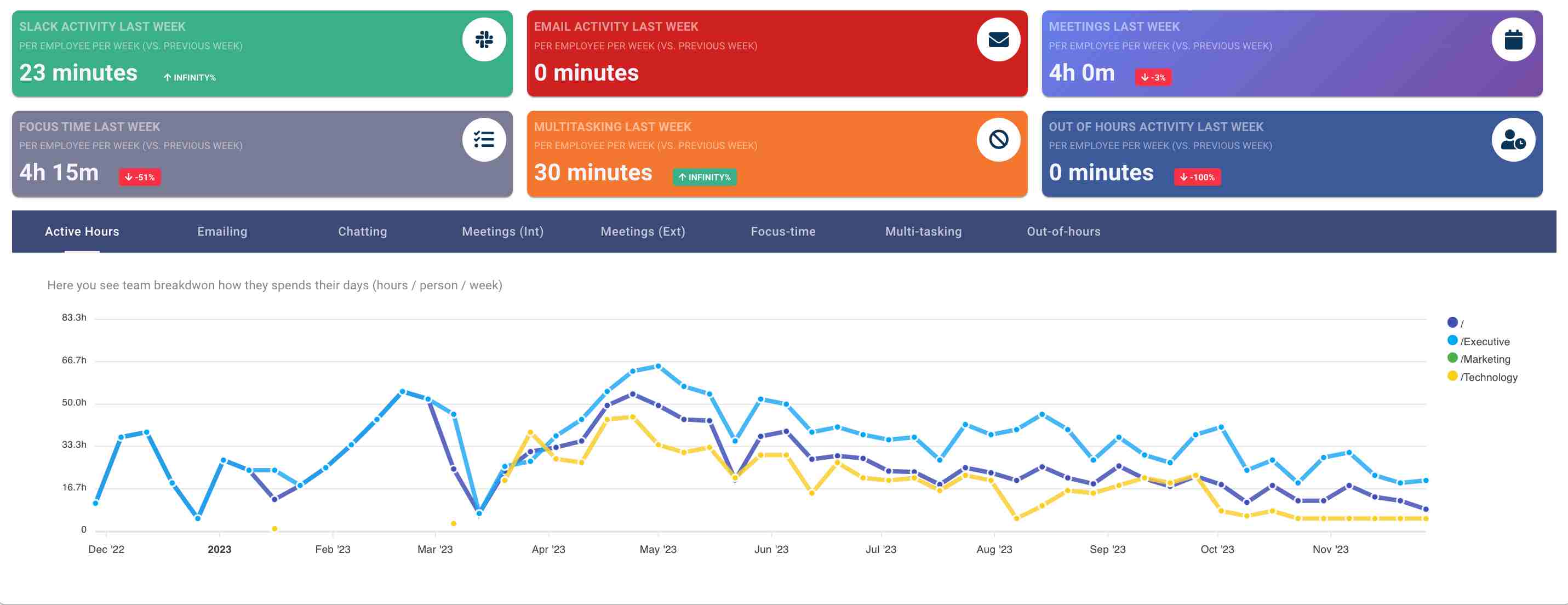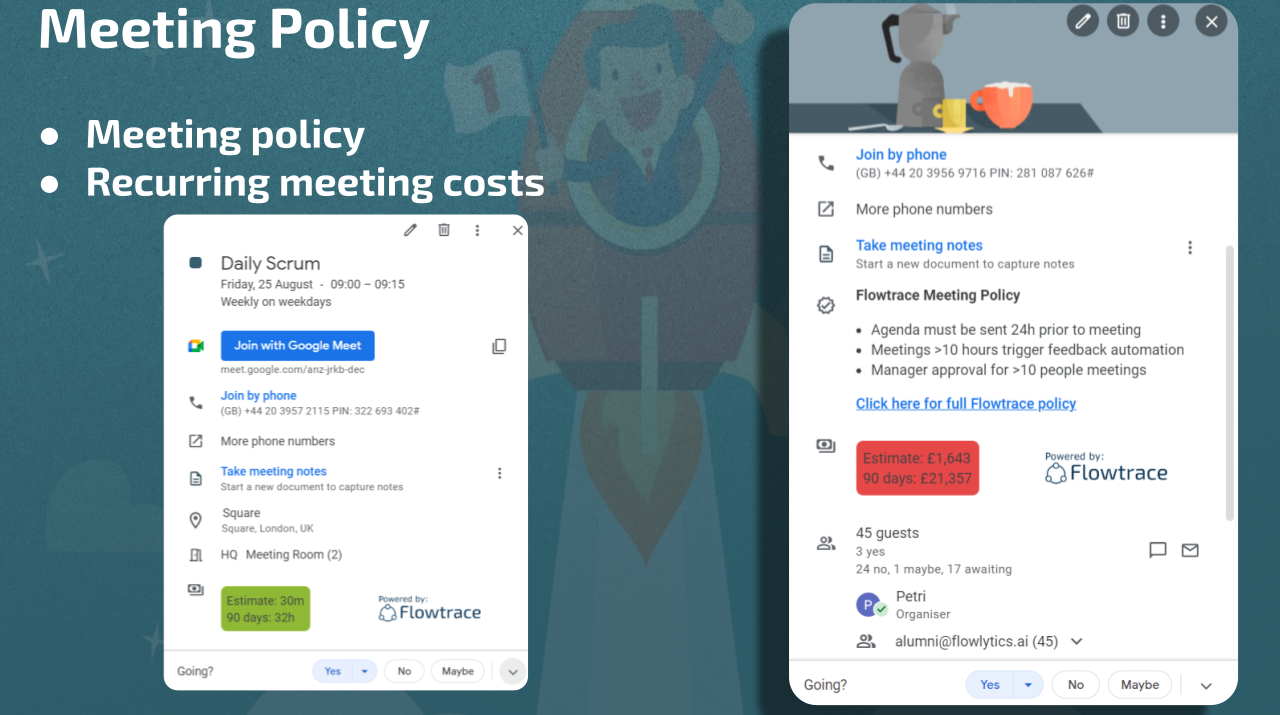Meeting Culture - A Guide to Improve Your Meetings
Improve your meeting culture with this comprehensive guide to enhance efficiency, reduce waste, and foster better communication in your company...
Learn how to fix a broken meeting culture by identifying signs, understanding impacts, and implementing strategies for improvement in this comprehensive guide.
Effective meeting culture is crucial for the success of any organization. Meetings are not just a platform for discussion and decision-making; they are also vital for fostering collaboration, innovation, and alignment among team members. When meetings are well-structured and purposeful, they can drive productivity, enhance employee engagement, and facilitate strategic progress. However, when meeting culture is poor, it can lead to wasted time, decreased morale, and significant operational inefficiencies.
By identifying the common signs of a bad meeting culture and the negative impacts it can have on an organization, leaders can take proactive steps to analyze and improve their meeting practices. This article will explore practical strategies for addressing bad meeting habits and transforming your meeting culture into a more effective and productive one.
A dysfunctional meeting culture can significantly hinder an organization's productivity and employee morale. Recognizing the signs of a bad meeting culture is the first step toward making necessary improvements. Here are the key indicators:


By identifying and addressing these signs, organizations can work towards creating a healthier, more effective meeting culture that boosts productivity and employee satisfaction.
A poor meeting culture can have far-reaching negative effects on an organization. A study by Harvard Business Review found that executives spend nearly 23 hours a week in meetings, leaving them with little time for deep, focused work . This highlights the need to critically evaluate the necessity of each meeting and to streamline meeting practices to ensure they are truly necessary and effective.
Here are some of the critical impacts:

To address meeting overload, organizations need to conduct a thorough review of their meeting schedules, question the necessity of each meeting, and explore alternative communication methods such as emails or collaborative tools for quick updates and information sharing. By doing so, they can reduce the frequency of unnecessary meetings and free up valuable time for more productive activities.
To effectively address a broken meeting culture, it is essential to conduct a thorough analysis of current meeting practices. This involves conducting a meeting audit, gathering feedback from employees, and identifying common issues using data and analytics.

By conducting a thorough meeting audit and using data-driven tools to analyze your meeting culture, you can identify the root causes of inefficiencies and develop targeted strategies for improvement. This proactive approach ensures that meetings become more purposeful, engaging, and productive, ultimately enhancing overall organizational effectiveness.
To transform a dysfunctional meeting culture, it's essential to address the specific bad habits that have been identified. Here’s how to tackle these common issues:
Many meetings are ineffective because they lack clear goals. Establishing specific objectives for each meeting ensures that discussions are focused and purposeful, reducing the tendency for meetings to drift off-topic and become unproductive.
Distributing detailed agendas before meetings helps participants prepare adequately, knowing exactly what will be discussed. This preparation ensures that meetings are more productive and that all necessary topics are covered within the allocated time.
Inviting only those who are essential to the meeting prevents overcrowding and ensures that everyone present has a relevant role. This reduces the time wasted on explaining background information to unnecessary participants.
Using interactive tools like polls or Q&A sessions during meetings can enhance engagement. These elements encourage active participation from all attendees, making meetings more dynamic and productive.
Strictly following the agenda helps keep the meeting on track and within the scheduled time. This discipline prevents meetings from running over, which not only respects participants’ time but also reduces the financial costs associated with prolonged meetings.
Establishing and enforcing clear meeting policies, such as starting and ending on time and requiring preparation beforehand, can drastically improve the efficiency of meetings. These policies set expectations and ensure that everyone is aligned on the meeting's structure and purpose.

Recording decisions and action items during meetings ensures accountability and provides a clear record of what was agreed upon. This documentation is crucial for tracking progress and following up on tasks, ensuring that meetings lead to actionable outcomes.
Using tools to track the completion of action items helps prevent recurring issues and ensures that meetings are productive. This tracking holds participants accountable for their responsibilities, fostering a culture of follow-through and continuous improvement.
To address these bad meeting habits effectively, leveraging data-driven tools can provide valuable insights and streamline the process of transforming meeting culture:
Tools that track meeting frequency and duration can help identify patterns of overload. By analyzing this data, organizations can reduce the number of unnecessary meetings and better allocate time for essential ones.
Regularly collecting and analyzing feedback from meeting participants helps identify areas for improvement. Data-driven insights can highlight specific issues such as lack of engagement or frequent overruns, enabling targeted interventions.
Continuously monitoring meeting metrics and adjusting practices based on data ensures that meetings remain effective and aligned with organizational goals. This iterative process fosters a culture of continuous improvement and efficiency.
By addressing these bad meeting habits with clear strategies and leveraging data-driven tools, organizations can significantly enhance their meeting culture. This not only makes meetings more effective and engaging but also contributes to better overall organizational performance.
Flowtrace leverages data to pinpoint inefficiencies in meeting practices. By analyzing metrics such as frequency of meetings, engagement, and meeting duration, it highlights areas that need improvement. This data-driven approach ensures that changes are based on objective insights rather than subjective perceptions.
Here are some key features:

With clear data on meeting performance, organizations can make informed decisions about how to structure and schedule meetings more effectively. This leads to more productive and purposeful meetings that align with organizational goals.
By leveraging Flowtrace’s capabilities, organizations can significantly improve their meeting culture. The platform’s data-driven insights and comprehensive tracking tools help identify and address bad meeting habits, leading to more efficient, engaging, and cost-effective meetings.
Fixing a broken meeting culture is crucial for any organization aiming to enhance productivity, reduce costs, and improve employee morale. Inefficient meetings can lead to significant time wastage, financial losses, and employee burnout. By addressing common issues such as meeting overload, lack of clear objectives, and poor participation, organizations can transform their meeting culture into one that is more effective and engaging.
Flowtrace provides comprehensive meeting metrics and analytics, collaboration insights, and action item tracking, all of which help identify inefficiencies and monitor progress. By leveraging these insights, organizations can make informed decisions to continuously improve their meeting practices.
Improve your meeting culture with this comprehensive guide to enhance efficiency, reduce waste, and foster better communication in your company...
Improve meeting agenda effectiveness with this simple guide. Discover key strategies to improve clarity, time management, and decision-making for...
Learn how tracking meeting cost indicators can optimize resource allocation, enhance budget management, and boost productivity in your organization.